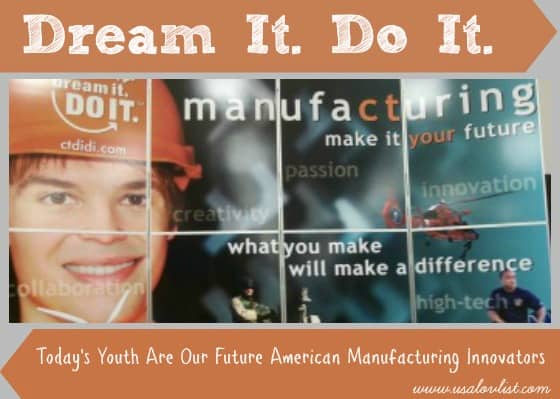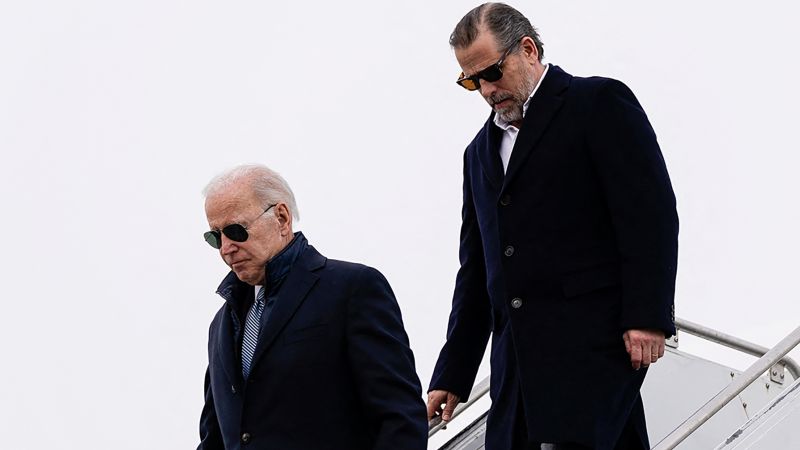The Future Of American Manufacturing: Will Trump's Plan Work?

Table of Contents
This article will delve into the complexities of the issue, analyzing the impact of key policies on the American manufacturing landscape and examining the significant challenges that remain. We will assess whether the initiatives implemented were truly effective in achieving their stated goals and offer a nuanced perspective on the long-term outlook for American manufacturing.
Evaluating Trump's Manufacturing Policies
The Trump administration implemented several policies aimed at boosting domestic manufacturing. Let's analyze their effectiveness:
Tax Cuts and Their Impact
A significant component of the Trump administration's economic plan was a substantial cut in corporate taxes. The intention was to incentivize businesses to invest more in the United States, leading to increased job creation and a resurgence of American manufacturing. Studies show that while tax cuts may incentivize investment, the effect on reshoring – the return of manufacturing operations from overseas – is debated. While some companies did increase capital expenditures, much of this investment went towards automation, rather than hiring additional workers.
- Increased investment in automation: Companies invested heavily in automating processes, increasing efficiency but often reducing the need for human labor.
- Limited evidence of significant job growth in traditional manufacturing sectors: While some jobs were created, the overall impact on employment in traditional manufacturing remained modest.
- Potential for increased competitiveness in global markets: Lower taxes potentially enhanced the competitiveness of some American manufacturers in the international arena.
Trade Policies and Tariffs
The Trump administration implemented significant tariffs on imported goods from countries like China, aiming to protect American manufacturers from foreign competition and encourage domestic production. However, the impact was complex and multifaceted.
- Increased costs for raw materials and components: Tariffs on imported goods increased the cost of raw materials and components for many American manufacturers, impacting their profitability and competitiveness.
- Retaliatory tariffs from other countries: The imposition of tariffs often triggered retaliatory tariffs from other nations, hindering American exports and further disrupting global supply chains.
- Potential for job creation in some sectors, job losses in others: While some sectors benefited from increased domestic demand, others suffered from higher input costs and reduced exports.
- Shifting global supply chains: Companies responded to tariffs by diversifying their supply chains, shifting production to other countries outside the scope of the tariffs.
Infrastructure Spending and its Role
Increased infrastructure spending was proposed to improve manufacturing efficiency and logistics. Better roads, bridges, and ports would reduce transportation costs and improve access to markets. However, the actual implementation and impact of these plans varied significantly.
- Improved transportation networks: Investments in infrastructure could theoretically lead to improved transportation networks, benefiting manufacturers through reduced transportation costs and improved efficiency.
- Modernized ports and infrastructure: Modernizing ports and related infrastructure would enhance the efficiency of exporting and importing goods.
- Increased efficiency and reduced costs for manufacturers: Improved infrastructure could potentially translate to increased efficiency and reduced costs for manufacturers.
- Potential for creating construction and related jobs: The infrastructure projects themselves would create jobs in the construction sector and related industries.
Challenges Facing American Manufacturing
Even with supportive policies, American manufacturing faces significant headwinds:
Competition from Overseas
Low-cost manufacturing in countries like China and Vietnam continues to pose a major challenge. The ability of these countries to produce goods at significantly lower costs, often with lower labor standards and environmental regulations, makes competition fierce.
- Lower labor costs in developing countries: Labor costs in developing countries remain significantly lower than in the United States, impacting price competitiveness.
- Technological advancements in overseas manufacturing: Overseas manufacturing has made significant strides in adopting advanced technologies, boosting productivity and efficiency.
- Need for innovation and technological advancement in the US: American manufacturers must continuously innovate and adopt advanced technologies to remain competitive.
The Skilled Labor Shortage
A significant skills gap exists within the American workforce, impacting the ability of manufacturers to fill critical roles.
- Aging workforce in many manufacturing sectors: Many manufacturing sectors face an aging workforce with a lack of younger workers entering the field.
- Lack of skilled workers to operate advanced machinery: The increasing complexity of manufacturing processes requires a skilled workforce to operate advanced machinery and technologies.
- Need for investments in training and education programs: Significant investment in vocational training and education programs is necessary to bridge the skills gap.
- Increased automation to reduce reliance on manual labor: Increased automation can help mitigate the labor shortage, but it also presents its own set of challenges.
Assessing the Long-Term Outlook
The future of American manufacturing hinges on several factors:
Technological Advancements and Reshoring
Technological advancements, including automation and artificial intelligence (AI), offer the potential to enhance American manufacturing competitiveness. Reshoring, the return of manufacturing operations to the US, is also gaining traction.
- Increased automation leading to higher efficiency: Automation can lead to increased efficiency and productivity, offsetting higher labor costs.
- Potential for creating higher-skilled jobs in the US: While some jobs may be lost to automation, new jobs requiring higher skills will be created.
- Reduced reliance on overseas supply chains: Reshoring reduces dependence on potentially volatile overseas supply chains.
- Geopolitical factors impacting reshoring decisions: Geopolitical instability and trade tensions can influence companies' decisions to reshore.
The Role of Government Policy in Shaping the Future
Government policies play a crucial role in shaping the future of American manufacturing. Long-term success requires a strategic approach that addresses the challenges discussed above.
- Continued investment in R&D and innovation: Ongoing investments in research and development are vital for fostering innovation and technological advancements.
- Targeted support for specific manufacturing sectors: Targeted government support can help specific manufacturing sectors remain competitive.
- Effective workforce development initiatives: Investing in workforce development programs is crucial to addressing the skills gap.
- International cooperation on trade and technology: International cooperation on trade and technology can foster a more stable and predictable global environment.
Conclusion: The Future of American Manufacturing: A Verdict on Trump's Plan?
The effectiveness of Trump's manufacturing policies is a complex issue with no simple answer. While some initiatives, such as tax cuts, aimed to stimulate investment, their impact on reshoring and job creation was limited. Tariffs, while intended to protect domestic manufacturers, disrupted supply chains and led to retaliatory measures. Infrastructure spending, if fully implemented, could have a positive long-term impact. However, the persistent challenges of global competition and the skilled labor shortage remain significant hurdles.
The future of American manufacturing is far from certain. It requires a multi-pronged approach involving technological innovation, robust workforce development programs, strategic government policies, and a focus on long-term competitiveness. The debate over the future of American manufacturing is far from over. Continue the conversation by researching current manufacturing statistics and voicing your opinion on the best path forward for American industry.

Featured Posts
-
 Do Hunter Bidens Recordings Indicate A Decline In Joe Bidens Cognitive Function
May 21, 2025
Do Hunter Bidens Recordings Indicate A Decline In Joe Bidens Cognitive Function
May 21, 2025 -
 Abn Amro Sterke Kwartaalcijfers Stuwen Aex Koers Omhoog
May 21, 2025
Abn Amro Sterke Kwartaalcijfers Stuwen Aex Koers Omhoog
May 21, 2025 -
 The Goldbergs Exploring The Shows Humor And Heart
May 21, 2025
The Goldbergs Exploring The Shows Humor And Heart
May 21, 2025 -
 Navys Culture Under Scrutiny Bribery Charges Against Top Admiral
May 21, 2025
Navys Culture Under Scrutiny Bribery Charges Against Top Admiral
May 21, 2025 -
 Cobollis First Atp Title Bucharest Open Victory
May 21, 2025
Cobollis First Atp Title Bucharest Open Victory
May 21, 2025
